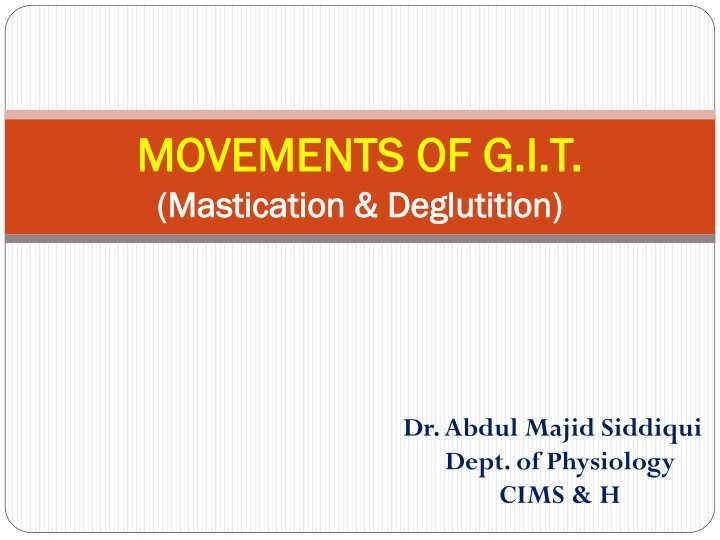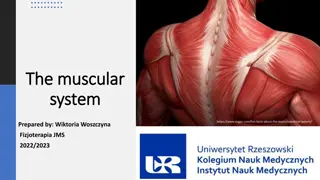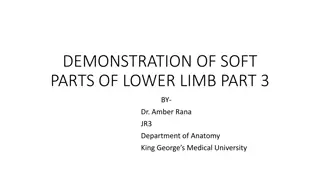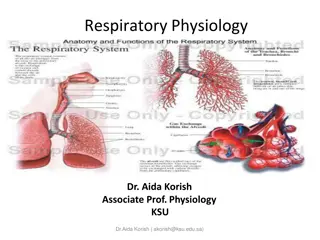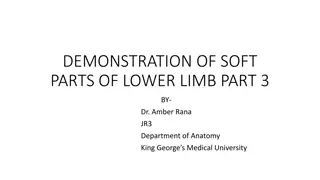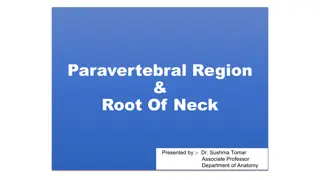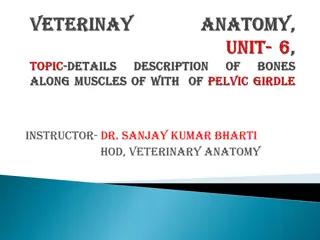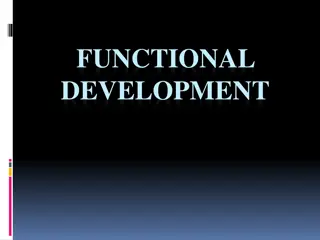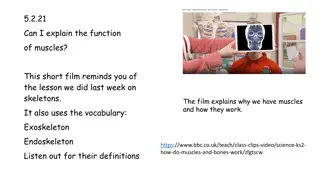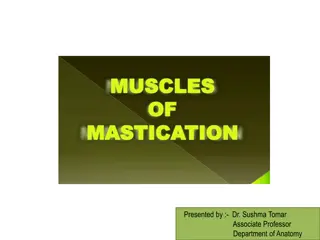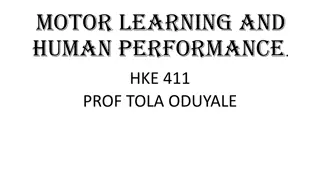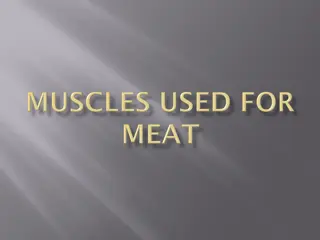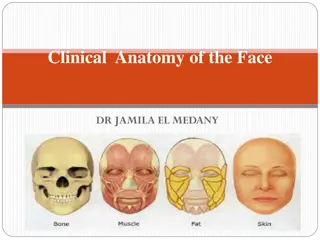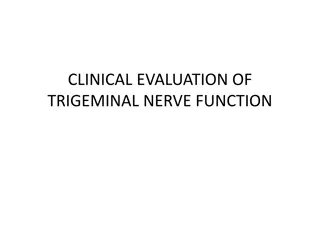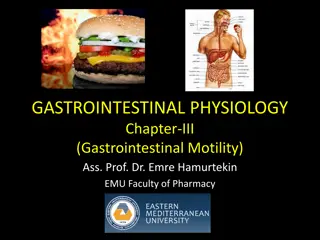Importance of Mastication: Functions and Muscles Involved
Mastication, or chewing, plays a crucial role in the digestion process by grinding food into smaller particles, facilitating swallowing and digestion efficiency. Learn about the significance of mastication, the functions of different teeth, muscles involved, and the control mechanisms. Explore the impact of mastication in food processing, digestion rate, and overall gastrointestinal health.
Download Presentation

Please find below an Image/Link to download the presentation.
The content on the website is provided AS IS for your information and personal use only. It may not be sold, licensed, or shared on other websites without obtaining consent from the author.If you encounter any issues during the download, it is possible that the publisher has removed the file from their server.
You are allowed to download the files provided on this website for personal or commercial use, subject to the condition that they are used lawfully. All files are the property of their respective owners.
The content on the website is provided AS IS for your information and personal use only. It may not be sold, licensed, or shared on other websites without obtaining consent from the author.
E N D
Presentation Transcript
MOVEMENTS OF G.I.T. MOVEMENTS OF G.I.T. ( (Mastication & Deglutition Mastication & Deglutition) ) Dr. Abdul Majid Siddiqui Dept. of Physiology CIMS & H
MASTICATION (CHEWING) Definition: - This is the grinding of food into smaller particles with the help of teeth and jaw muscles. Functions of different teeth:- Incisors: - provide strong cutting action. Canines: - are responsible for tearing action. Premolars & molars:-have grinding action.
Importance of mastication:- Grinding makes easier for the food to be swallowed. It mixes food with saliva & salivary enzymes Grinding of food into smaller particles also increases surface area & hence , the rate of digestion Grinding also prevents damage which food may Cause to the mucosa of G.I.T. Mastication also breaks the indigestible Cellulose membranes, present around the nutrient portion of most of the fruits & raw vegetables. Food also Comes in Contact with taste receptors and also stimulates odour stimulating olfactory receptors
Muscles of Mastication:- I. Masseter muscle: - Supplied by mandibular division of v. cranial nerve. It raises the mandible, clenches the teeth and help to protract (prolong) the mandible. II. Tempolaris - muscle: - supplied by same nerve. It raises the mandible and retracts the mandible after protraction
III. Internal & External Pterygoid muscles:- Same nerve supply. It protrudes the mandible, depresses the chin. so it helps in opening the mouth and also produces grinding movement. IV.Buccinators muscle: - supplied by VIIth cr. Nerve It is an accessory muscle of mastication. It prevents accumulation of foods between cheek & teeth
Control of mastication:- It is Carried out, voluntarily; but mainly coordinated by reflex- process Mastication Reflex :- Food (bolus) in mouth - reflex - inhibition of muscles of mastication - lower jaw dropped - stretching & so, Contraction of muscles of mastication through stretch reflex - lower jaw raises - closure of mouth compression of bolue between teeth - Repeatation again & again. Centre of reflex:- Medulla, Efferent: - Vth - cr. Nerve (mandibular branch)
DEGLUTITION (SWALLOWING) Definition: - The process of passage of food from oral; Cavity into the stomach, through esophagus - is known as deglutition (swallowing). Stages: - 3 stages:- Buccal / oral sage :- a voluntary stage Pharyngeal stage :- Involuntary stages(both), with reflex Esophageal stage :- processes, The reflex is controlled by Xth (vagus) nerve. The center is present in medulla.
I. ORAL / BUCCAL STAGE: - a voluntary stage 1. Food is rolled on the upper surface of tongue and a bolus (a rounded mass of food) is formed by mixing with saliva. 2. The soft palate rises and the posterior part of nasapharynx approaches towards the soft palate nasal regurgitation of food. 3. The respiration is reflex stopped. 4. Now, the bolus is pushed to the posterior part of the tongue, i.e. towards pharynx.
Stages of deglutition. A. Preparatory stage; B. Oral stage; C. Pharyngeal stage; D. Esophageal stage
PHARAYNGEAL STAGE: - A reflex process II. a. Deglutition (swallowing) reflex:- Food present at posterior part of tongue & in opening of pharynx at Tactile stimulation of receptors, present in area of opening of pharynx Afferent-impulses, through V& IX Cranial nerves Deglutition Center (in medulla) efferent impulses , through V, VII , X & XII cranial nerves sequence of events in pharyngeal phase
b. Sequence of events in deglutition reflex:- 1. Tongue pressing against hard palate & increasing intra oral pressing - prevention of entry of food back into oral Cavity. 2. Backward & upward movement of soft palate - approximation of soft palate with the post. Pharyngeal wall - prevention of entry of food into nasal Cavity. 3. Forward and upward movement of larynx , approximation of the vocal cords , and epiglottis forming a hood like Covering over the larynx Prevention of entry of into larynx. The respiration stops for a while - Deglutition apnea
4. Entry of food from pharynx into esophagus:- i. Palate pharyngeal folds on either side of pharynx approximate - to make a slit like opening for food passage - allowing only properly masticated food, to pass through it ii. (Simultaneously, upper 3-4 cm of esophagus relaxes; i.e. relaxation of upper esophageal - sphincter (U.O.S.). iii. (At the same time, the entire pharyngeal muscle wall Contracts from superior to inferior part - & originating a false peristaltic wave - which also continues, in esophagus .
III. OESO PHAGE AL STAGE: - It conducts the food from esophagus to stomach, by movements, as follows:- a. PRIMARY - PERISTALSIS :- is simply a Continuation of peristaltic wave initiated in pharynx It takes 8-10 secs. to carry food to the stomach. But in upright position - food passes to stomach, earlier; in 5-8 secs - due to added effect of gravity.
b. SECONDARY PERISTALSIS: - When Primary peristalsis fails to carry all food to stomach. Sec. Purist, wave - is initiated in esophagus; due to distances ion of esophagus with food. These waves continue till all the food is emptied into the stomach. These waves are produced due to intrinsic nerve plexuses, present in the wall, & party due to vagal reflex
